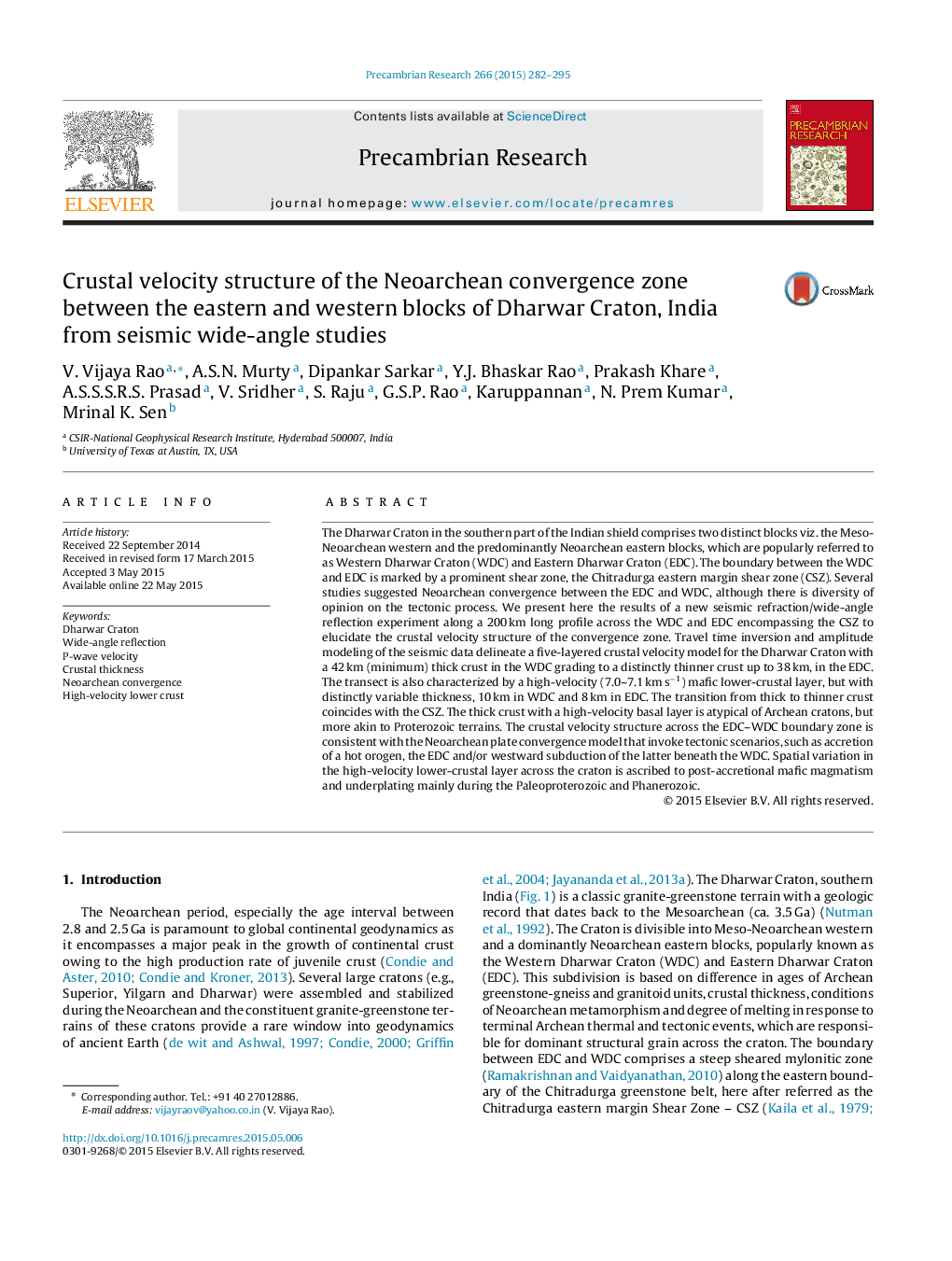| کد مقاله | کد نشریه | سال انتشار | مقاله انگلیسی | نسخه تمام متن |
|---|---|---|---|---|
| 4722544 | 1639609 | 2015 | 14 صفحه PDF | دانلود رایگان |
• Neoarchean accretion in the Dharwar Craton.
• Crustal thickness varies from 38 km to 42 km across CSZ.
• Variation in crustal thickness is gradational without any sharp offset in Moho.
• High-velocity (7.1 km s−1) lower-crustal-layer represents magmatic underplating.
• Archean cratons are susceptible to reworking.
The Dharwar Craton in the southern part of the Indian shield comprises two distinct blocks viz. the Meso-Neoarchean western and the predominantly Neoarchean eastern blocks, which are popularly referred to as Western Dharwar Craton (WDC) and Eastern Dharwar Craton (EDC). The boundary between the WDC and EDC is marked by a prominent shear zone, the Chitradurga eastern margin shear zone (CSZ). Several studies suggested Neoarchean convergence between the EDC and WDC, although there is diversity of opinion on the tectonic process. We present here the results of a new seismic refraction/wide-angle reflection experiment along a 200 km long profile across the WDC and EDC encompassing the CSZ to elucidate the crustal velocity structure of the convergence zone. Travel time inversion and amplitude modeling of the seismic data delineate a five-layered crustal velocity model for the Dharwar Craton with a 42 km (minimum) thick crust in the WDC grading to a distinctly thinner crust up to 38 km, in the EDC. The transect is also characterized by a high-velocity (7.0–7.1 km s−1) mafic lower-crustal layer, but with distinctly variable thickness, 10 km in WDC and 8 km in EDC. The transition from thick to thinner crust coincides with the CSZ. The thick crust with a high-velocity basal layer is atypical of Archean cratons, but more akin to Proterozoic terrains. The crustal velocity structure across the EDC–WDC boundary zone is consistent with the Neoarchean plate convergence model that invoke tectonic scenarios, such as accretion of a hot orogen, the EDC and/or westward subduction of the latter beneath the WDC. Spatial variation in the high-velocity lower-crustal layer across the craton is ascribed to post-accretional mafic magmatism and underplating mainly during the Paleoproterozoic and Phanerozoic.
Journal: Precambrian Research - Volume 266, September 2015, Pages 282–295
